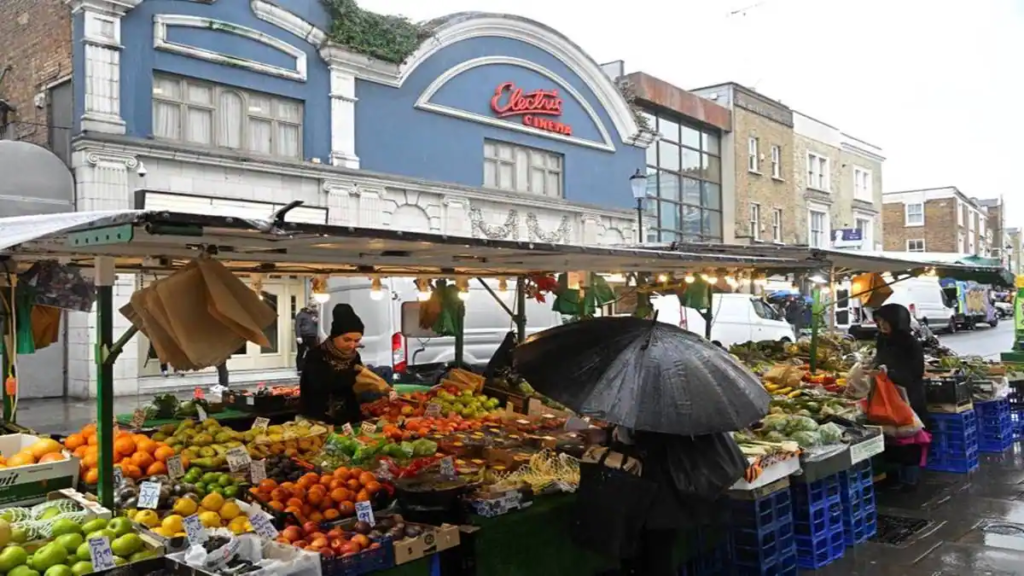Friday’s figures showed no change to the Office for National Statistics’ (ONS) initial estimate of 0.1% quarterly gross domestic product (GDP) growth for the first three months of 2023, leaving output 0.5% lower than it was in the final quarter of 2019, before the COVID-19 pandemic.
Britain’s economy made a lacklustre start to 2023 as inflation ate into households’ disposable income, official figures showed on Friday, and economists expect higher interest rates to keep up the pain even as inflation eases. Friday’s figures showed no change to the Office for National Statistics’ (ONS) initial estimate of 0.1% quarterly gross domestic product (GDP) growth for the first three months of 2023, leaving output 0.5% lower than it was in the final quarter of 2019, before the COVID-19 pandemic.
Households dug into their savings – although the overall savings ratio remained higher than before the pandemic – and the cost of living increased faster than incomes. The squeeze on households looks set to continue, as the Bank of England raised interest rates to a 15-yeara high of 5% in June and investors see little sign that it is about to end its tightening cycle, as inflation has stayed higher than expected.
“The final Q1 2023 GDP data confirms that the economy steered clear of a recession at the start of 2023. But with around 60% of the drag from higher interest rates yet to be felt, we still think the economy will tip into one in the second half of this year,” Ashley Webb, UK economist at consultancy Capital Economics, said.
Britain’s economic recovery since the COVID-19 pandemic has been much slower than almost every other big advanced economy, though Germany has struggled too and its economy in the first quarter was 0.5% smaller than before the pandemic. In annual terms, the Britain’s economy had grown just 0.2% by the end of the first quarter.
INFLATION SQUEEZE
British households have been put under pressure by a surge in inflation, which hit a 41-year high of 11.1% last year after Russia’s invasion of Ukraine sent natural gas prices soaring, and has been slow to fall since. Friday’s figures showed households’ real disposable income – money available after adjusting for inflation and taxes – was 0.8% lower than the previous quarter, the biggest drop since the second quarter of 2022, and 0.5% lower than a year earlier, reflecting higher costs for electricity, gas and food.
There were also signs that people are saving less in response to the increased cost of living, as the savings ratio fell to 8.7% in the first quarter from 9.4% in the quarter before, its lowest level since the second quarter of 2022 though well above its pre-pandemic average of just over 5%.The ONS recorded a net withdrawal of money by households from bank accounts for the first time since records began in 1987.
Mortgage repayments also exceeded new borrowing by a record 5.2 billion pounds ($6.6 billion), as people became warier about taking out new debt at a time of sharply rising interest rates.House prices in June were 3.5% lower than a year earlier, the biggest annual fall since 2009, according to figures also released on Friday by Nationwide Building Society.
There was some brighter news on business investment, which rose by 3.3% in the first quarter, the biggest increase in a year. However, the ONS reported anecdotal evidence it was driven by companies rushing to invest ahead of the March 31 expiry of the “super-deduction” tax break on capital projects.That policy was replaced by a new one of full expensing for three years, but businesses have long complained that the lack of long-term clarity over corporate tax policy had fostered a stop-start approach to investment in Britain.
Britain’s underlying current account deficit also narrowed to 2.6% of GDP from 3.3% of GDP in the final quarter of 2022, after stripping out volatile flows of precious metals, as preferred by the ONS. The total current account deficit including precious metal flows totalled 10.8 billion pounds in the first quarter, above economists’ forecast of 8.5 billion pounds in a Reuters poll and equivalent to 1.7% of GDP.

Source:financialexpress.com


